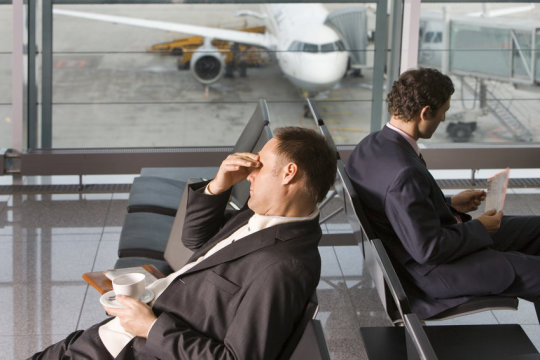

Researchers from the University of Surrey and Lund University (Sweden) investigated how frequent, long-distance travel is represented in mass and social media. They found that the images portrayed do not take into account the damaging side effects of frequent travel such as jet-lag, deep vein thrombosis, radiation exposure, stress, loneliness and distance from community and family networks.
Instead, the study found that those with ‘hypermobile’ lifestyles were often seen as having a higher social status. By assessing how first-class flights, ‘must-see’ destinations and frequent-flyer programmes are represented, glamorising hypermobility as exciting, appealing and exclusive, the study shows how the ‘dark side’ of travel is ignored.
“A man in a sharp suit, reclining in a leather chair, laptop open in front of him, a smiley stewardess serving a scotch and soda. This is often the image of travel, particularly business travel portrayed in TV ads and glossy magazines. But there is a dark side to this ‘glamorised’ hypermobile lifestyle that the media, and society ignores,” explains lead author Dr Scott Cohen from the University of Surrey.
“The level of physiological, physical and societal stress that frequent travels places upon individuals has potentially serious and long-term negative effects that range from the breaking down of family relationships, to changes in our genes due to lack of sleep.
“It is not only traditional media that perpetuates this image. Social media encourages competition between travellers to ‘check-in’ and share content from far-flung destinations. The reality is that most people who are required to engage in frequent travel suffer high levels of stress, loneliness and long-term health problems. There are also wider implications for the environment and sustainability. In this context, hypermobility seems far from glamourous.”
The researchers call for more discussion on the adverse effects of hypermobility, to realistically reflect the negative impact of frequent and long-haul travel.
“Society needs to recognise that the jet-set lifestyle is not all it’s made out to be. By striving to travel far, wide and frequently we are damaging the environment, ourselves and potentially our closest loved ones,” said Dr Cohen.
Story Source:
The above post is reprinted from materials provided by University of Surrey. Note: Materials may be edited for content and length.
Journal Reference:
- Cohen, S.A. & Gössling, S. A darker side of hypermobility. Environment and Planning A, 2015 (in press)
